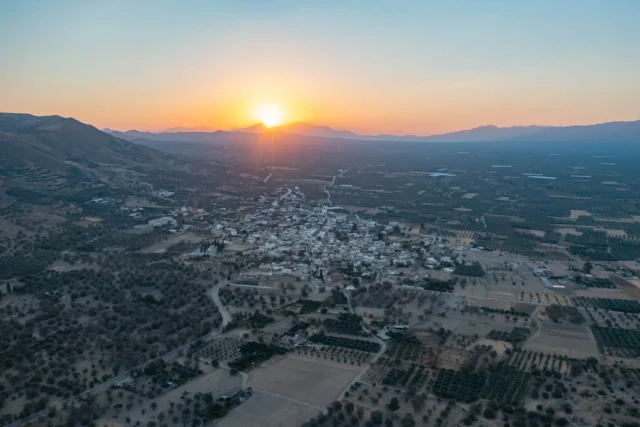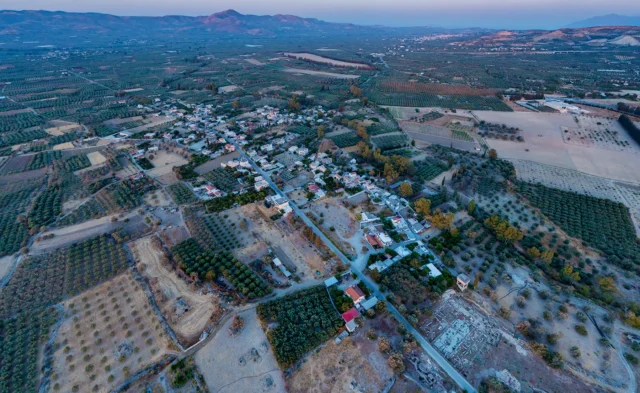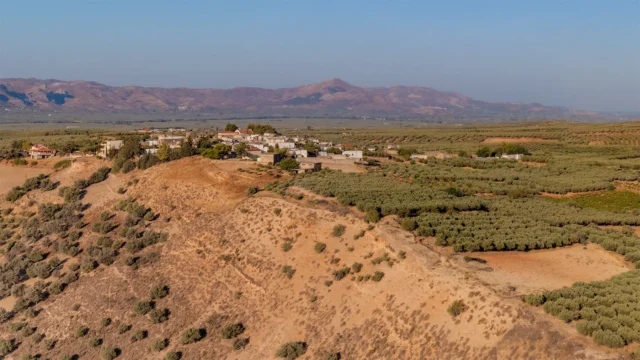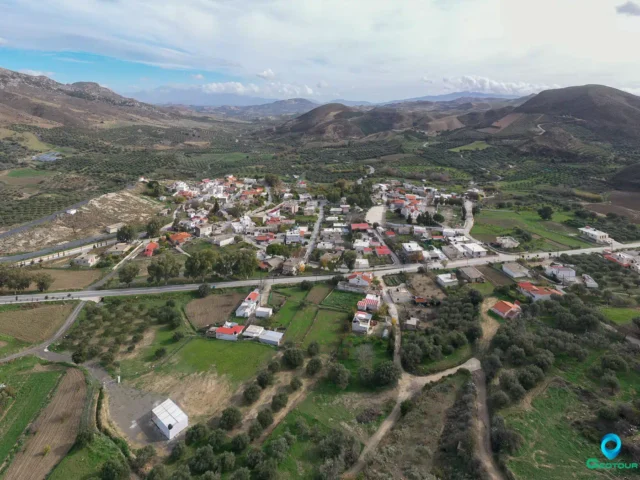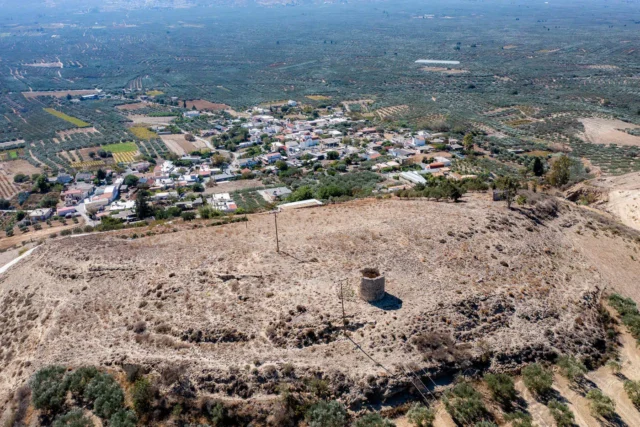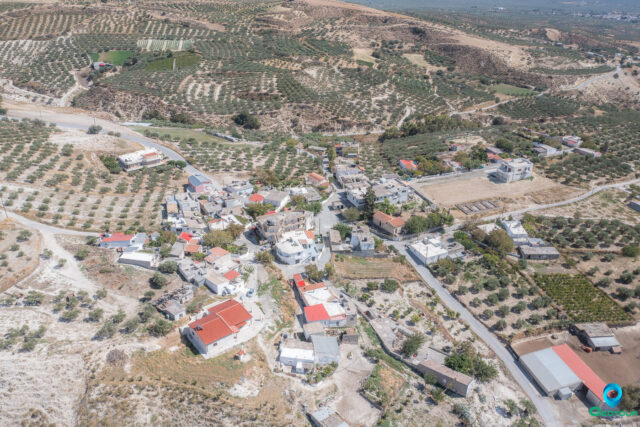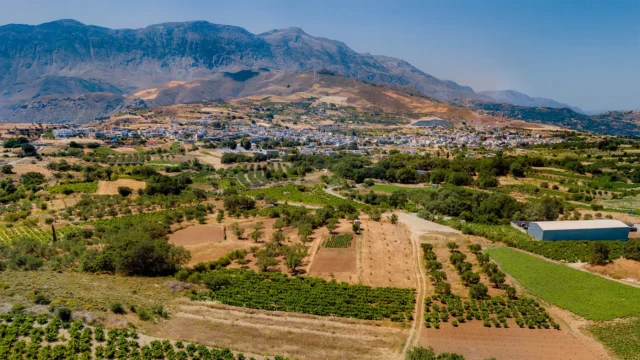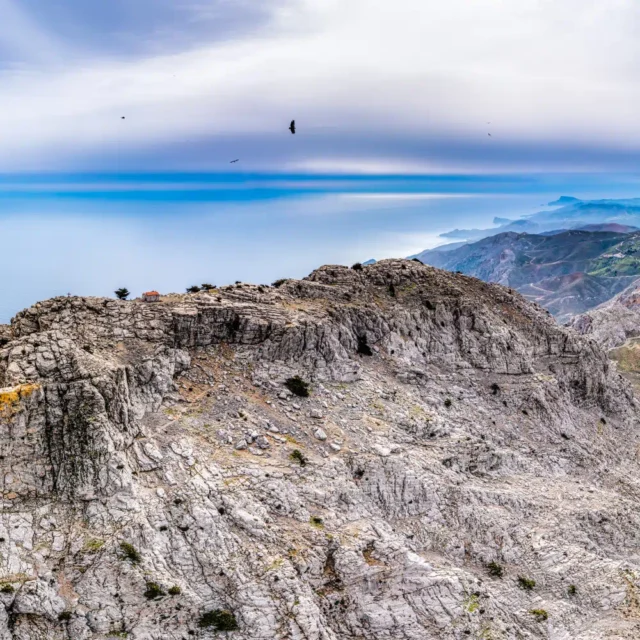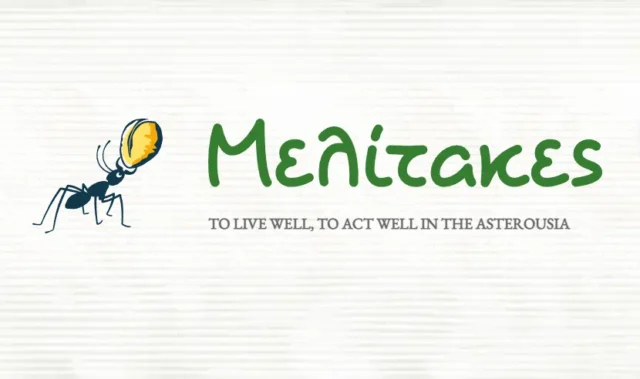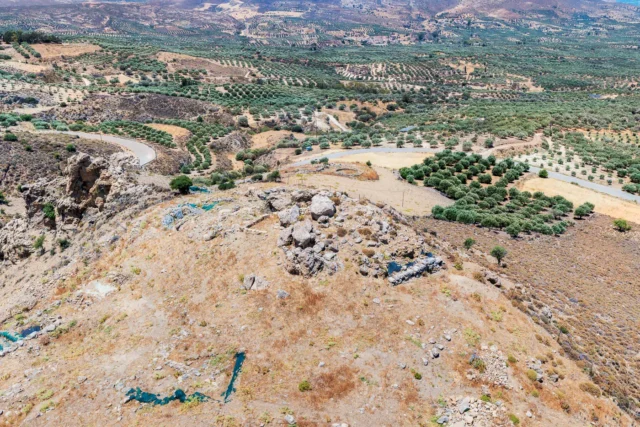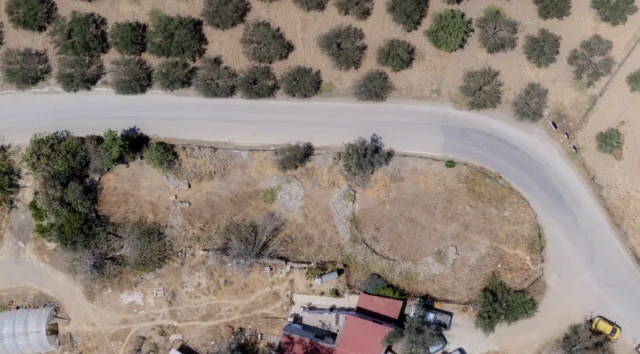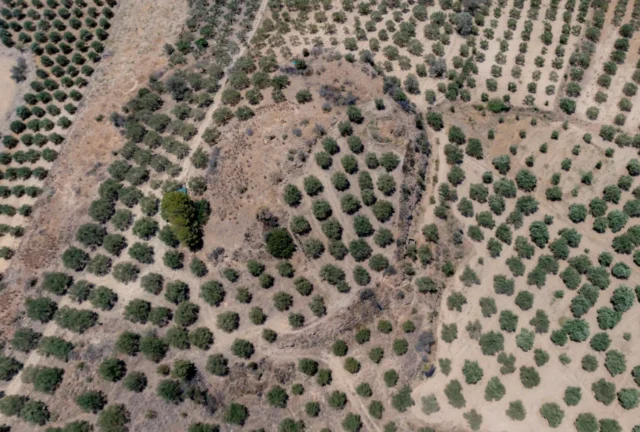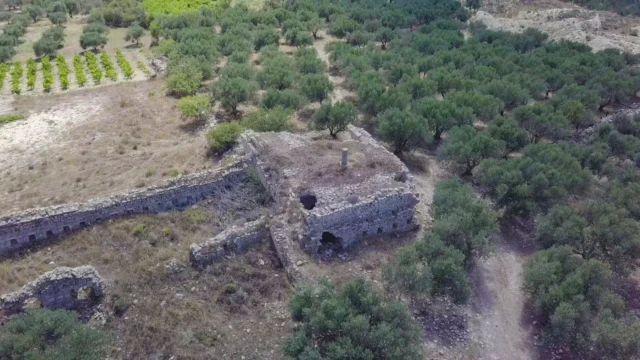80
listings found
Categories
Active filters:
Nyvritos, Gortyna
Nyvritos is a settlement located in the Heraklion regional unit on the island of Crete, Greece. It belongs to the Municipality of Gortyna
Agioi Deka, Gortyna
Agioi Deka, in Crete's Gortyna municipality, sits atop ancient Gortyna, honoring the Ten Martyrs martyred in 250 AD. The village features a 12th-century church at the martyrdom site, the Filakeion museum showcasing Gortyna artifacts, and the "Vasiliou Melathron," former bishop's residence. Agioi Deka, with a population around 732 (2021), is a hub with schools, a health center, and transport links. The village's history includes the Malikoutis family, Greek War of Independence revolutionaries, and its past as the Bishopric of Gortyna and Arcadia seat until 1945. The Metropolitan Church houses the marble slab where the Ten Saints were beheaded.
Mitropoli, Gortyna
Mitropoli, a village in Crete's Gortyna municipality, sits adjacent to the significant archaeological site of Gortyna. Its name derives from the nearby ruins of the first Byzantine metropolitan church of Agios Titos. Recent excavations have unearthed a mosaic floor from an early Christian basilica, further highlighting the area's historical depth. The village is approximately 46 kilometers from Heraklion. Mitropoli's economy is largely agricultural, focusing on grapes, olives, vegetables, cereals, and citrus fruits. The village has a primary school, kindergarten, and the central church of Agios Nikolaos, showcasing Byzantine architecture. Historical population data shows fluctuations, with the current population around 370. Mitropoli's proximity to Gortyna makes it a point of interest for those studying ancient and Byzantine history.
Gkagkales, Gortyna
Gangales is a village in the Heraklion Regional Unit, Crete, with a history dating back to the Second Byzantine period (961-1204). The village is located on the Messara plain, 48.8 km from Heraklion. Gangales is mentioned in Venetian and Ottoman records, and played a role in the Cretan resistance against both empires. During World War II, it sheltered Allied soldiers and resistance fighters.
The main church is dedicated to the Transfiguration of the Savior. Gangales also has a primary school and a kindergarten. Today, it is a small agricultural village and the seat of the Gangales Municipality. The population of Gangales has fluctuated throughout its history, with a peak of 493 in 1981. As of 2021, the population was 264.
Gergeri, Gortyna
Gergeri, a village in Crete's Gortyna municipality, rests on Psiloritis' slopes. It features the Rouvas forest, Fountana spring, and Venetian aqueduct remnants. Historical significance includes the birthplace of revolutionary leader Fragkios Mastrochakis. The village has churches like the Transfiguration of the Savior, Agios Georgios, and Panagia Kera, site of a WWII massacre. "Digenis' Tomb" lake and the Rouvas forest, with endemic flora and fauna, are nearby. Gergeri's economy is based on agriculture and livestock farming, with a women's cooperative producing local goods. The village preserves traditions through festivals and events, showcasing its cultural heritage.
Larani, Gortyna
A village in the Gortyna municipality, 37.5 kilometers from Heraklion, at an altitude of 440 meters. Its history is documented from the Venetian period, first mentioned in 1301, when it consisted of two settlements, 'Laragni Catto' and 'Laragni Apano'. During Ottoman rule, it was a predominantly Turkish village. The local economy relies on agriculture, mainly producing raisins, oil, and fodder crops. Religious sites include the churches of the Assumption of the Virgin Mary, Agia Triada, Agia Paraskevi, and Agios Nikolaos.
Kastelli (Tsifout Kastelli), Gortyna
Kastelli, also known as Tsifout Kastelli (Jewish Castle), is a village in Ano Akria, Heraklion, Crete. It is 7 km north of Asimi and 44 km from Heraklion, at an altitude of 448 meters. The village, historically linked to the 13th-century Castel Bonifacio, is mentioned in documents from 1375 and 1583. Residents mainly engage in olive cultivation and livestock farming. Points of interest include the ruins of Castel Bonifacio and the Church of Constantine and Helen, which celebrates its feast day on May 21st. The village has seen a steady population with recorded numbers from 1881, 1900, 1928, 1981, 1991, 2001, 2011, and 2021.
Apoini, Gortyna
Apoini is a settlement located in the Heraklion regional unit on the island of Crete, Greece. It belongs to the Municipality of Gortyna
Inia, Gortyna
Inia is a settlement located in the Heraklion regional unit on the island of Crete, Greece. It belongs to the Municipality of Gortyna
Asimi, Gortyna
Asimi is a settlement located in the Heraklion regional unit on the island of Crete, Greece. It belongs to the Municipality of Gortyna
Agia Varvara, Gortyna
Agia Varvara is a settlement located in the Heraklion regional unit on the island of Crete, Greece. It belongs to the Municipality of Gortyna
Kofinas peak
Kofinas peak sanctuary in Crete offers insights into Minoan religious practices, societal structures, and the relationship between humans and the natural world.
The Minoan Settlement and Cemetery at Koumasa
Koumasa, an important Minoan archaeological site in southern Crete, is located about 15 km south of Gortyn. The site is significant for its Prepalatial cemetery and Minoan settlement, providing insights into the lives and customs of the Minoans during the Prepalatial period.
The Cemetery at Koumasa consists of three circular tholos tombs, a square tomb, and a circular ossuary. Excavations uncovered artifacts, including a clay figurine depicting a bull-leaping scene, Cycladic figurines, stone offering tables, and gold jewelry.
The Minoan settlement at Koumasa is located on a hill overlooking the cemetery. Excavations have revealed an extensive settlement with evidence of domestic and industrial activities. The presence of large walls suggests the existence of substantial buildings.
Platanos Minoan tholos tombs
The Minoan tholos tombs at Platanos, located in the Messara Plain of Crete, are significant archaeological remains from the Prepalatial period (c. 3200-2000 BC). Excavated in the early 20th century, the site features three tholos tombs (circular, beehive-shaped burial chambers) and a paved courtyard. The tombs, labeled A, B, and C, vary in size and preservation. Tomb A, the largest, has an internal diameter of 13 meters. The tombs contained many artifacts, including seals, figurines, pottery vessels, stone vessels, gold jewelry, and bronze tools. These findings provide valuable insights into Minoan funerary practices and material culture during the Prepalatial period. The presence of imported objects, such as an ancient Babylonian cylinder seal and Egyptian scarabs, also highlights the extensive trade networks that connected Crete with other civilizations in the Eastern Mediterranean.
Minoan Tholos Tomb at Porti
The Minoan Tholos Tomb at Porti, a significant archaeological site in Crete, offers a glimpse into Minoan burial practices and cultural traditions during the Bronze Age.










